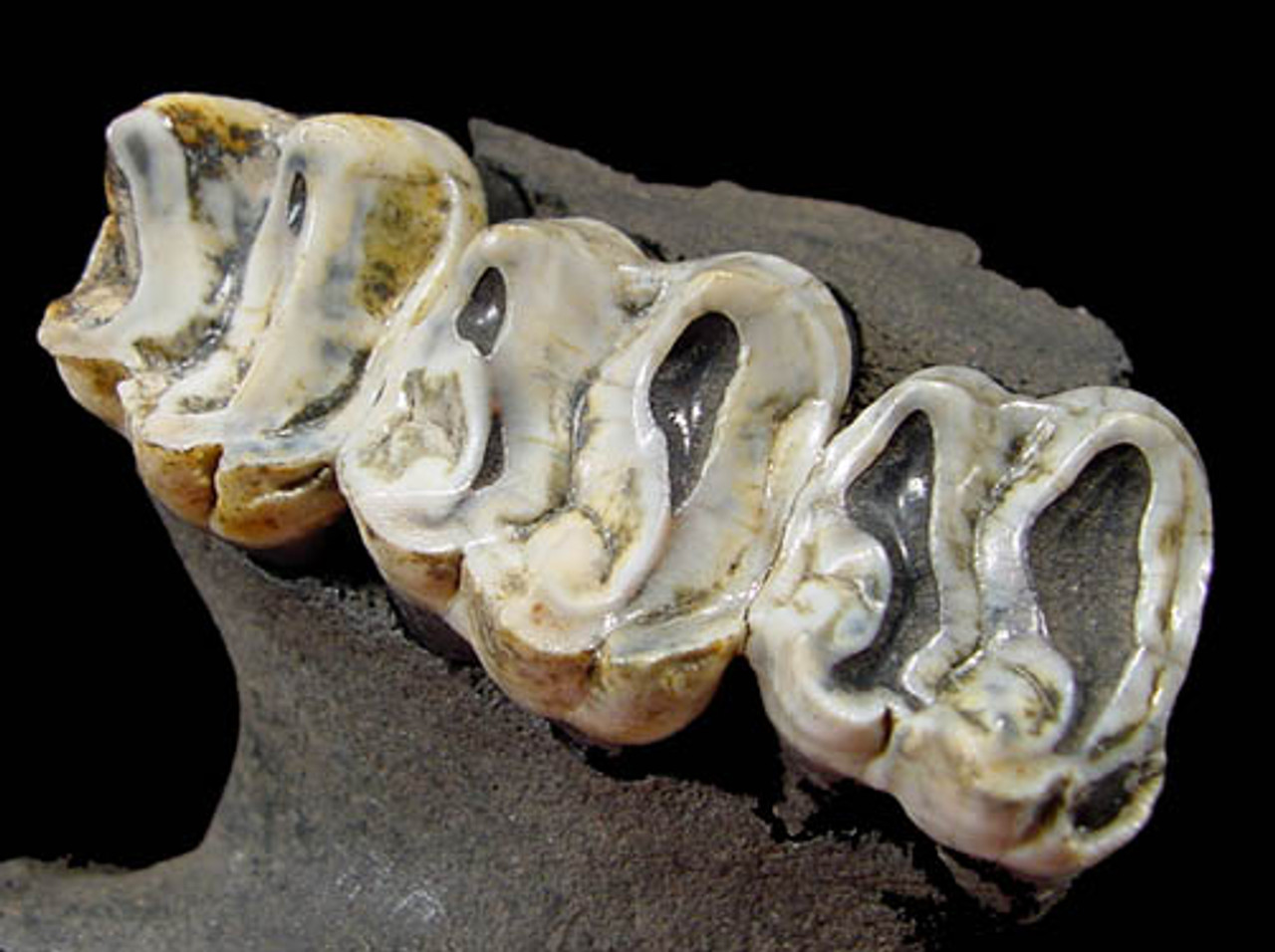Product Description
ITEM #
|
LM44-004
|
||
ID
|
Tapirus haysii
|
||
FOUND
|
Leisey Shell Pit - Hillsborough Co., Florida, U.S.A.
|
||
AGE
|
PLEISTOCENE (IRVINGTONIAN): 1.7 - 1 million years
|
||
SIZE
|
3" in length
|
||
CONDITION
|
NO REPAIR OR RESTORATION - TEETH STABILIZED
|
||
NOTE
|
NICE FOSSIL PARTIAL MAXILLA FROM A
|
||
Actual Item - One Only
Comes with a certificate of authenticity / information sheet |
|||
From the largest tapir that ever lived in prehistoric Florida and from a world-famous fossil site now closed to the public, this is a super rare complete left maxilla molar set of Tapirus haysi from the Early Pleistocene Leisey Shell Pit in Ruskin, Florida. Out of the four species that once lived in Florida (all died out in the Pleistocene), this species of tapir is the largest making this a very nice and large, displayable fossil tooth set from this odd creature. The bone process hooking out from the teeth is part of the left zygomatic arch. These are molars M1 - M3 and are about as perfect as you can find in any mammal tooth fossil. The roots are still embedded in the original skull portion in which they were found. The bone and roots have been glued to keep the teeth from moving and falling out. The long, robust roots are still attached with only minor damage in a couple limited areas but otherwise intact as seen in the second to last image.
This is a very uncommon and impeccable specimen from Leisey. The history about the site in which this fossil was found is as fascinating as the animal itself. The Leisey Pit was Florida's richest and most concentrated assemblages of Pleistocene fossils ever found and one of North America's most famous sites of this period. Since the site has been closed to the public, collecting is prohibited. This superb specimen comes from an old private collection and is the first of its kind we have ever been fortunate enough to secure and offer for sale. The underside stabilized so that the teeth are secure in the jaw. Guaranteed NO REPAIR and NO RESTORATION. This finest grade tooth is AS FOUND!
The Tapiridae family are members of the order of Perissodactyla or 'Odd-toed Ungulates'. Ungulates are hoofed mammals that represent the main group of large herbivorous animals alive today. Tapirs first appeared about 40 million years ago during the Oligocene Period. They are still alive today in Central and northern South America as well as Southeast Asia although they are considered endangered in all regions. They are bizarre creatures with heavy pig-like bodies, large odd-toed hoofed feet and long, flexible snouts. They have the ability to move and grasp small branches and leaves with their trunks. Today, tapirs remain unchanged in appearance since they first evolved millions of years ago, which is quite unusual.
In Florida, the earliest tapir remains date back 22 million years ago to the Early Miocene. Only in the late Miocene though, do they become abundant. At least four species of tapirs lived in Florida but only one existed at any one time. Tapirus simpsoni was the first species to emerge with Tapirus veroensis being the last, surviving right up to the mass extinction marking the end of the Pleistocene. Another Pleistocene species, Tapirus haysii, was larger than all other prehistoric species.
 US DOLLAR
US DOLLAR
 EURO
EURO
 AUSTRALIAN DOLLAR
AUSTRALIAN DOLLAR
 CANADIAN DOLLAR
CANADIAN DOLLAR
 POUND STERLING
POUND STERLING
























